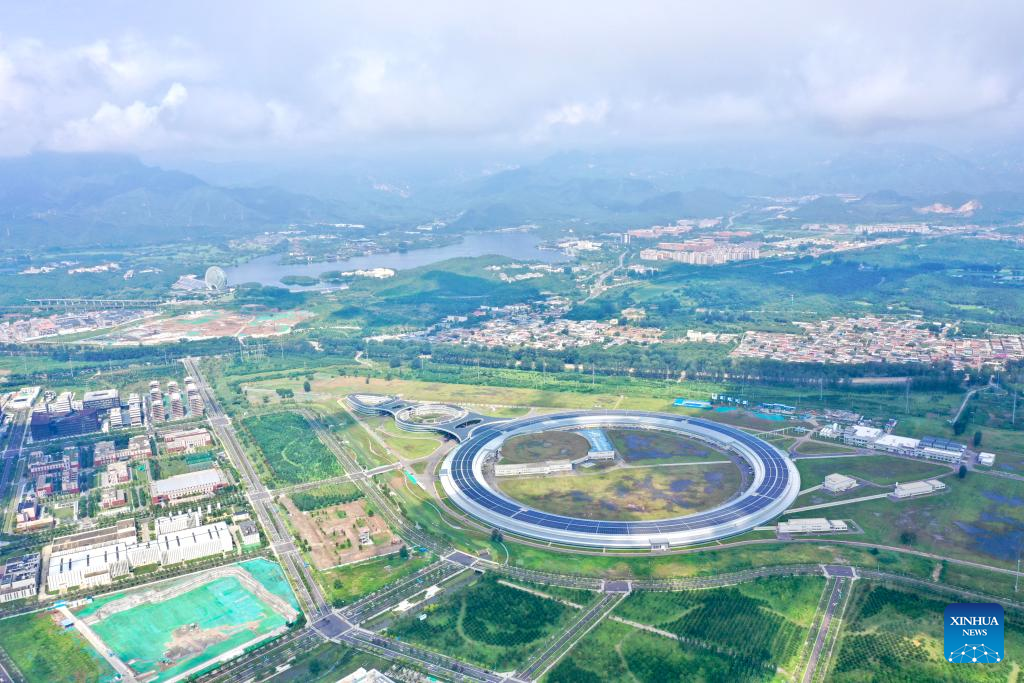
A drone photo taken on Aug. 18, 2024 shows the High Energy Photon Source (HEPS) in Beijing, capital of China.A major progress has been made in the construction of the High Energy Photon Source (HEPS), the first high-energy synchrotron radiation light source in China, with the electron beams with currents reaching 12 mA stored in the HEPS storage ring.The Institute of High Energy Physics (IHEP) under the Chinese Academy of Sciences, the main HEPS developer, announced the new achievement in Beijing's suburban Huairou District on Monday.The electron storage ring, with a circumference of 1,360.4 meters, is the main component of the HEPS accelerator complex. The HEPS storage ring is one of the largest synchrotron light source accelerators in the world and the largest in China. Its primary function is to store high-energy, high-quality electron beams and generate high-performance synchrotron radiation, according to Pan Weimin, the HEPS project director.As one of the country's key scientific and technological infrastructure projects, HEPS is expected to become one of the brightest fourth-generation synchrotron radiation facilities worldwide and will serve as a research platform for material science, chemical engineering, biomedicine and other fields. (Photo by Yuan Guang/Xinhua)
BEIJING, Aug. 19 (Xinhua) -- A major progress has been made in the construction of the High Energy Photon Source (HEPS), the first high-energy synchrotron radiation light source in China, with the electron beams with currents reaching 12 mA stored in the HEPS storage ring.
The Institute of High Energy Physics (IHEP) under the Chinese Academy of Sciences, the main HEPS developer, announced the new achievement in Beijing's suburban Huairou District on Monday.
As one of the country's key scientific and technological infrastructure projects, HEPS is expected to become one of the brightest fourth-generation synchrotron radiation facilities worldwide and will serve as a research platform for material science, chemical engineering, biomedicine and other fields.
The construction of the HEPS project began on June 29, 2019. The facility is composed of several parts, including accelerators, beamlines, end stations and support facilities.
A synchrotron radiation light source is a source of electromagnetic radiation usually produced by a storage ring. To generate extremely bright light, electrons will be accelerated to near the speed of light in several stages and forced to travel in a closed path.
The electron storage ring, with a circumference of 1,360.4 meters, is the main component of the HEPS accelerator complex. The HEPS storage ring is one of the largest synchrotron light source accelerators in the world and the largest in China. Its primary function is to store high-energy, high-quality electron beams and generate high-performance synchrotron radiation, according to Pan Weimin, the HEPS project director.
The commissioning of the storage ring was launched on July 23. A total of 1,776 magnets, over 2,500 power supplies and 578 electron beam position monitors have been installed on the storage ring, with over 100,000 control signals.
"Any small hardware error could affect the trajectory of the electron beam, which is undoubtedly a huge challenge for the commissioning of the storage ring," said Pan.
Commissioning of the HEPS storage ring will continue in the next few months, with the aim of achieving higher beam currents with a sufficiently long beam lifetime for vacuum conditioning and beamline commissioning, said Jiao Yi, deputy head of the HEPS accelerator division.
The HEPS project is expected to be ready for operation by the end of 2025. Once completed, HEPS will be able to emit light that is one trillion times brighter than the sun, and will be open to users in fields such as aerospace, energy, environment, life science and pharmaceuticals, according to IHEP. ■
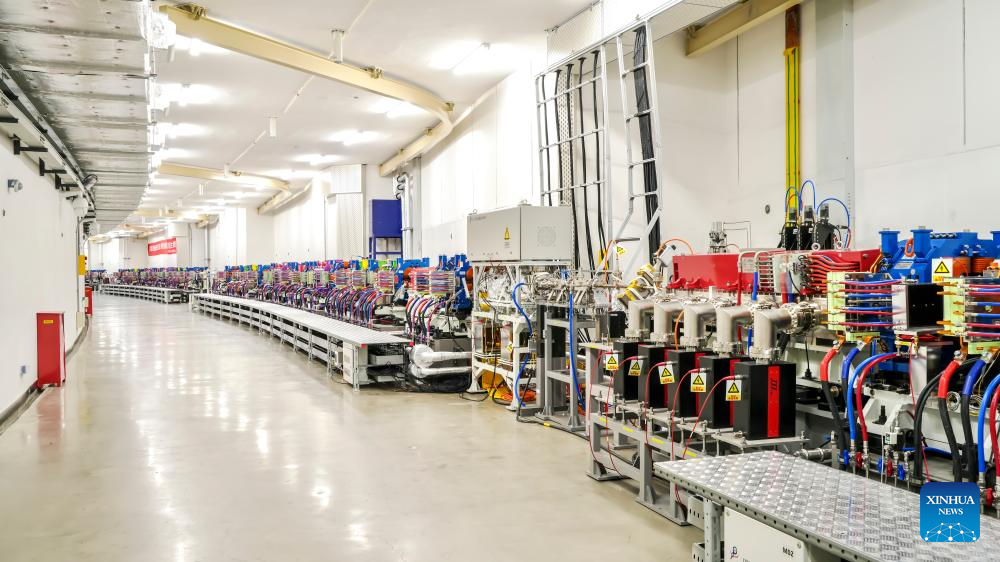
This photo taken on July 23, 2024 shows the tunnel of the High Energy Photon Source (HEPS) storage ring in Beijing, capital of China.(Photo by Yuan Guang/Xinhua)
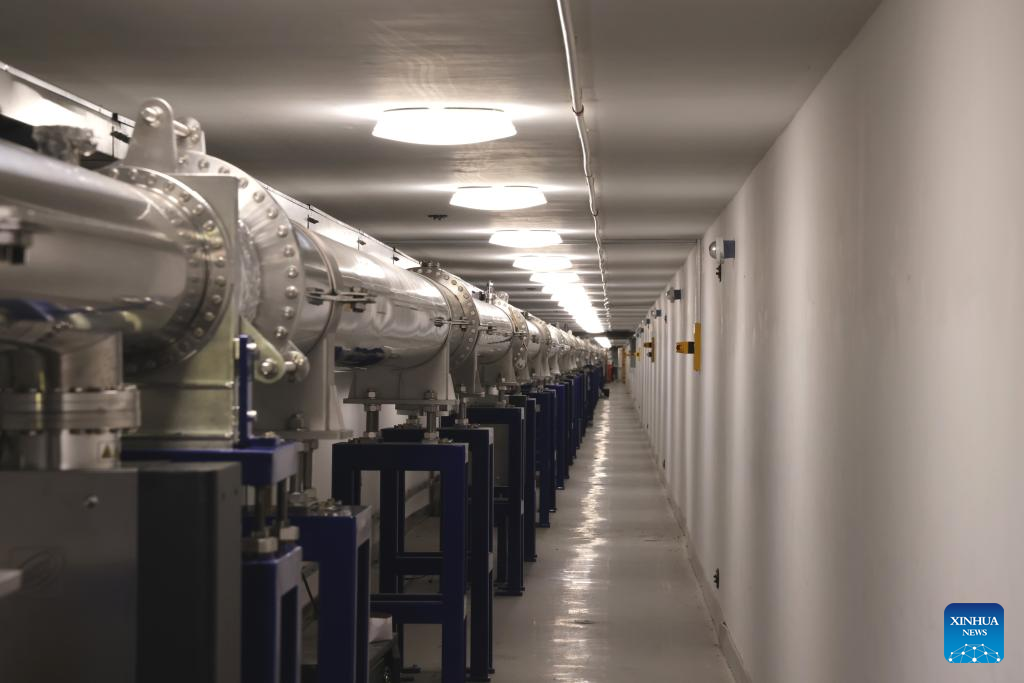
This photo taken on Aug. 19, 2024 shows the beamlines of the High Energy Photon Source (HEPS) under construction in Beijing, capital of China.(Xinhua/Jin Liwang)
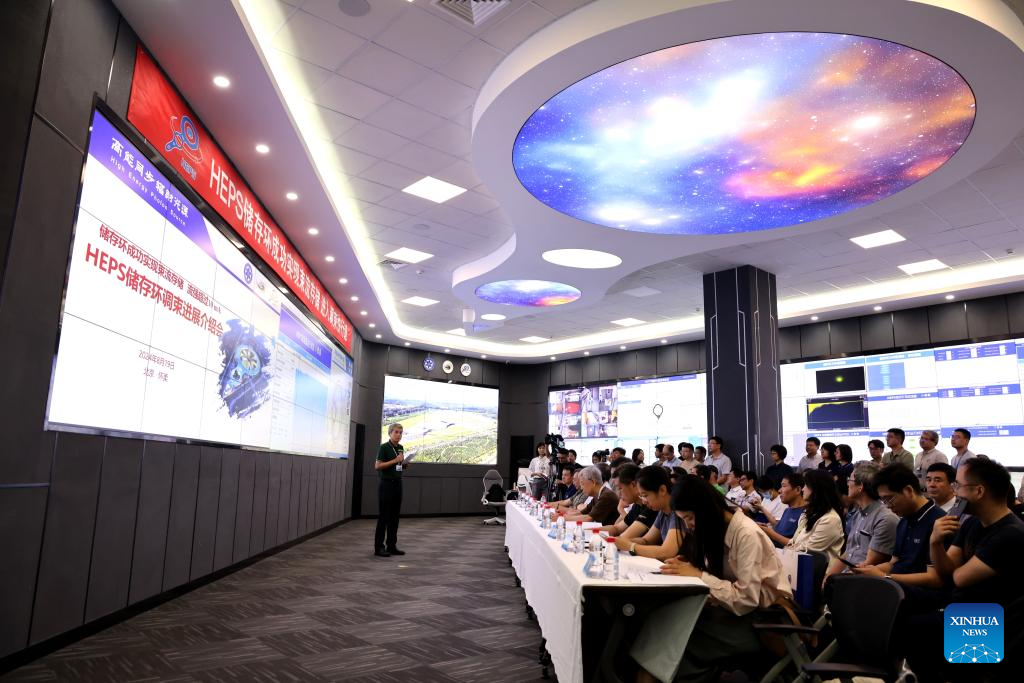
Pan Weimin, HEPS project director and a researcher at the Institute of High Energy Physics (IHEP) under the Chinese Academy of Sciences, briefs on the progress at the central control room of HEPS in Beijing, capital of China, Aug. 19, 2024.(Xinhua/Jin Liwang)
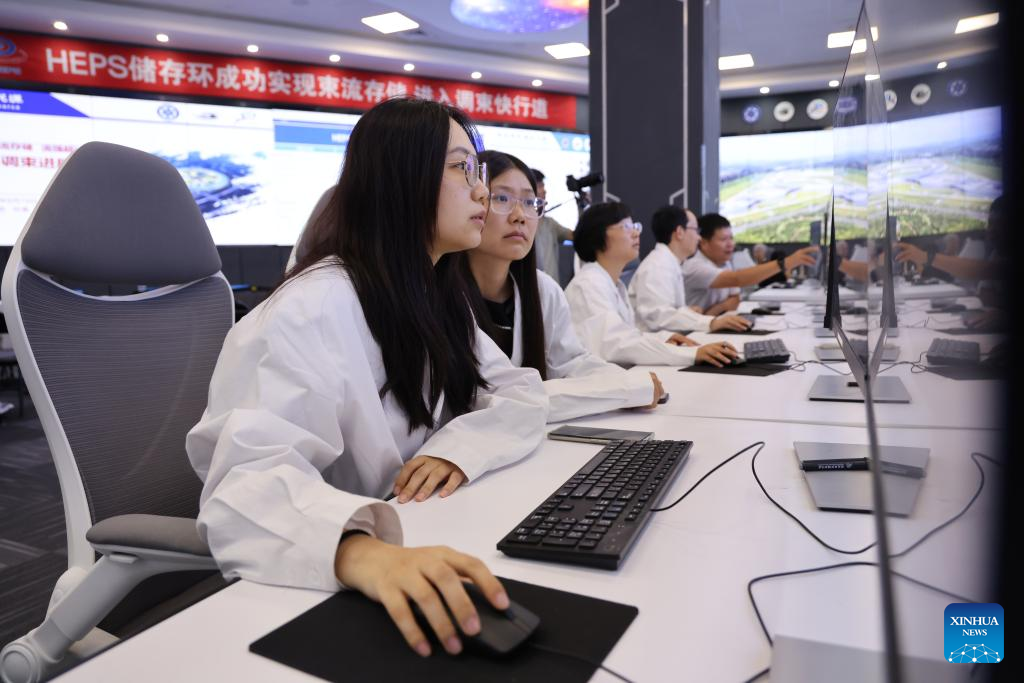
Scientists work in the central control room of HEPS in Beijing, capital of China, Aug. 19, 2024.(Xinhua/Jin Liwang)
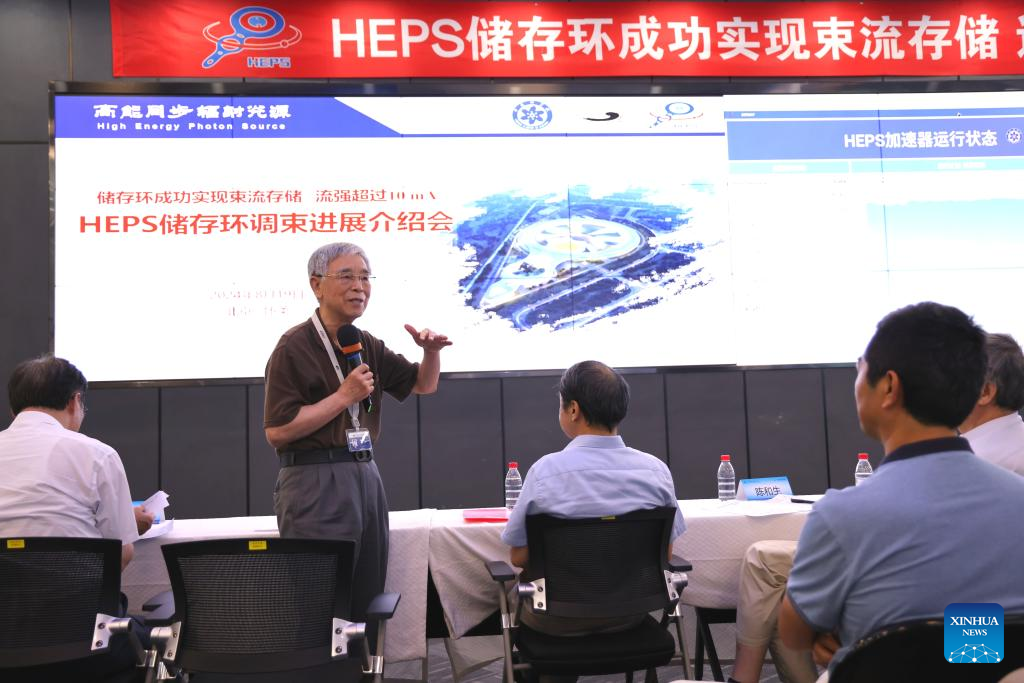
Chen Senyu, an academician of the Chinese Academy of Sciences, makes comments on the progress at the central control room of HEPS in Beijing, capital of China, Aug. 19, 2024.(Xinhua/Jin Liwang)
编辑:高佳槐